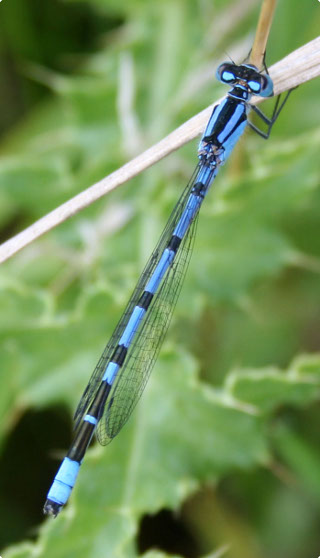Floodplain meadows provide habitat for invertebrates in a range of ways. They offer a significant seasonal resource of pollen and nectar for a large number of species that are generalist in their feeding habitats, particularly as adults. Bumblebees, sawflies, hoverflies and various beetles, including many of which are in global decline (Potts et al. 2010), can be abundant. Floodplain meadows also offer habitat for more specialist flower-feeding insects that require particular flowering plants, either to complete their larval stages or as the main food plant for adults. Additionally, ground beetles (some of which can survive flooding for months), spiders and invertebrates such as true bugs and leafhoppers living on plant stems, leaves and roots add to the diversity.
Invertebrates benefit overall both from structural and plant diversity within a grassland type and from a diversity of grassland types in the landscape i.e. a mosaic of meadows, pastures, road verges and hedge banks. There is a perception that pastures are better than meadows for invertebrates because the meadow habitat is largely lost when the hay is cut. However, meadows are uniquely rich nectar sources during the flowering period, and many species (particularly hoverflies and weevils) rely on such sources of food. In addition, uncut margins provide an ongoing resource. Moreover, some species groups are not affected by the hay cut, either because they live in the ground or because they have completed the life stages dependent on standing vegetation. These species groups may do better in meadows than pastures.
See here to read a literature review about the effects of floodplain-meadow conservation management on invertebrates.

The sawfly Abia sericea distribution is restricted to its host plants (devil's-bit scabious or field scabious). Photo credit- Judy Webb

.jpg)
Common blue butterfly. Common blue butterflies are ommonly found on meadows feeding on one of their foodplants, birds foot trefoil (Photo credit: Mike Dodd).
Common blue damselfly. Damselflies and dragonflies
are common in floodplain meadows feeding and
hunting near rivers and streams (Photo credit: Sonia Newman).